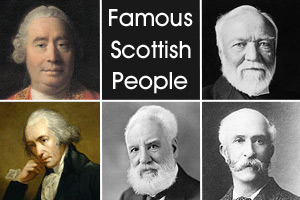Introduction
Scotland (Alba in Scottish Gaelic) is one of the countries making up the United Kingdom. Occupying the northern third of the island of Great Britain, Scotland has been historically and culturally divided into two geographical regions: the Highlands in the northwest and the Lowlands in the southeast.
The Highlands were one of the last strongholds of Celtic culture in Europe and is associated with a lot of Scottish stereotypes like clan names (starting with Mac- or Mc-), tartan, kilts, bagpipes and whisky. Scottish Gaelic, the native language of Scotland, is now spoken only by a tiny minority of Scots, mostly Highlanders from the west coast and the Hebrides.
Foreign invaders have settled in turn in the Scottish Lowlands since the Iron Age, with the respective arrivals of the Picts (Brythonic Celts), the Romans (briefly in the south), the Anglo-Saxons, the Danes, and the Normans. The last three invaders, combined with the growing influence of England from the late Middle Ages onwards, transformed the Lowlands from an ethnically and culturally Celtic place to a Celto-Germanic one, in which Scots (a West Germanic language descended from Old English), and later also English became the mainstream languages of the population. Nowadays Scottish English is the predominant language, although about a fifth of Lowlanders speak Scots as their mother tongue, and as much as 80% of them can speak or understand Scots to some extent. The degree of similarity between Scots and English is comparable to the one between Scandinavian languages, or between Castillan Spanish, Catalan and Portuguese.
Scottish people have had a considerable impact on the rest of the world, especially in the 18th and 19th centuries, when they developed modern economics, sociology, and utilitarianism, invented the steam engine, the pneumatic tyre, tarmac, the telephone, and penicillin. In the USA, Scots provided six presidents, they helped develop the steel industry, establish the Intelligence Service, and set up the first national parks. => See the list of Famous Scots.
Cuisine
Scottish cuisine, like British cuisine in general, does not have a very good reputation. Haggis, Scotland's national dish, may have a lot to do with it. It is essentially sheep's offals (heart, liver and lungs) minced with onion, and disguised with oatmeal, suet (mutton fat) and spices. The whole is then stuffed into a sheep's stomach. Not everybody's idea of fine gastronomy. Fortunately that is pretty much as bad as it gets. There are much more appealing dishes, making the best of Scotland's abundant game (venison, boar, rabbit, pheasant, partridge, grouse, duck), fish (cod, herring, mackerel, haddock, monkfish, halibut, skate) and seafood (oysters, mussels, lobster, crab).
Owing to Scotland's relatively cold climate, high-energy meals have always been popular. A good breakfast starts with an assortment of porridge (oatmeal), eggs, back bacon, sausage, black or white pudding, buttered toast, baked beans, tattie (potato) scones, oatcakes, and tea or coffee. Later in the day, deep-fried battered dishes and pastries are commonplace.
Typical Scottish dishes include Arbroath smokie (smoked haddock from Arbroath in Angus), cock-a-leekie (chicken and leek soup), crappit heid (fish head and liver cooked with oats, suet, onion and white pepper), cullen skink (soup made of smoked haddock, potatoes and onions), kedgeree (fish curry with hard-boiled eggs and rice), Scotch broth (mutton or beef, root vegetables and dried pulses stewed in barley), Scotch pie (double-crust meat pie filled with minced mutton), and stovies (mashed potato and onion mixed with minced beef). On the sweet side, Scotland is famous for its shortbread biscuits, scones, puff candies (honeycomb toffee), and butter tablets. One of the most famous desserts is cranachan, a mixture of whipped cream, heather honey, fresh raspberries, and toasted oatmeal soaked overnight in a little whisky.
Travel Guide






















